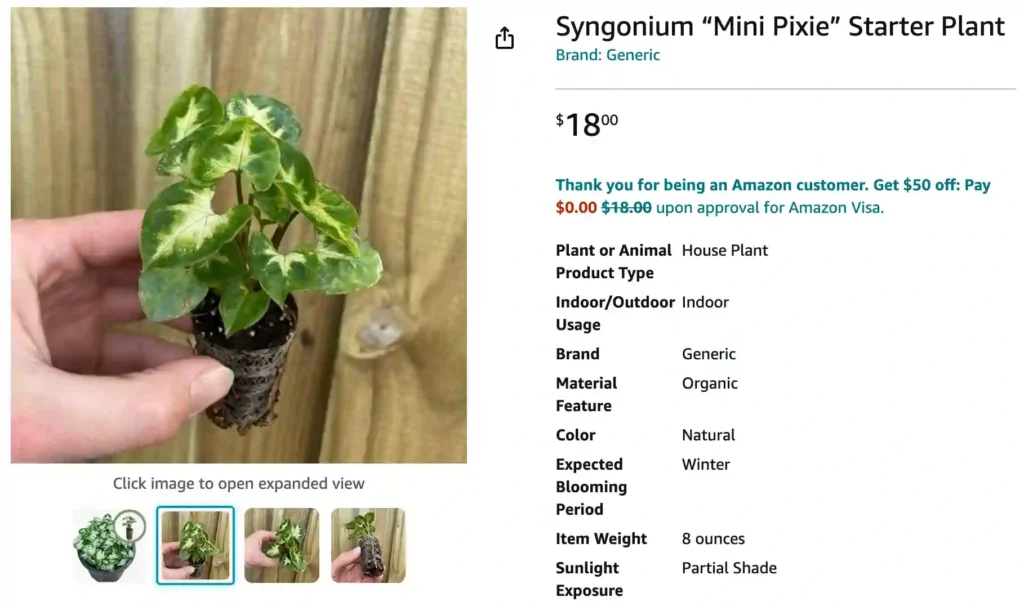
Syngonium Mini Pixie: The FAQ Guide for Plant Enthusiasts
Hi there, Ferb Vu here! Today, we’re diving into the delightful world of the Syngonium Mini Pixie. This miniature marvel has captured the hearts of plant lovers worldwide, and for good reason. Its adorable size, stunning variegation, and easy-going nature make it a perfect addition to any collection.
Whether you’re a seasoned plant parent or a curious newcomer, this FAQ guide will equip you with everything you need to know about caring for your Syngonium Mini Pixie.
What is a Syngonium Mini Pixie?
The Syngonium Mini Pixie is a compact version of the Syngonium podophyllum, also known as the Arrowhead Plant. It boasts beautiful arrow-shaped leaves with a unique charm. Unlike its vining cousins, the Mini Pixie prefers to grow in a bushy clump, rarely exceeding a few inches in height. The leaves typically showcase a stunning variegation, with creamy white centers contrasting against vibrant green edges.
Pro tip: The Mini Pixie thrives in terrariums due to its small stature and love for humidity.
Syngonium Mini Pixie vs. Syngonium Pixie
While the names might sound similar, there’s a key difference between the Syngonium Mini Pixie and the Syngonium Pixie (also known as the Pixie Butterfly). The Pixie is the larger, vining variety, known for its trailing stems and distinctive butterfly-like leaf markings. The Mini Pixie, on the other hand, is a dwarf version, featuring a compact growth habit and more pronounced variegation.
Here’s a quick comparison table to summarize the key differences:
| Feature | Syngonium Mini Pixie | Syngonium Pixie (Butterfly) |
|---|---|---|
| Growth Habit | Bushy, compact | Vining, trailing |
| Size | Up to a few inches | Can reach several feet |
| Leaf Markings | More pronounced variegation | Butterfly-like markings |
How to care for Syngonium Mini Pixie?
The Syngonium Mini Pixie is a low-maintenance plant, perfect for busy plant parents. Here’s what you need to know to keep yours thriving:
Light: Provide bright, indirect light. Avoid harsh midday sun, as it can scorch the leaves.
Water: Water when the top inch of soil feels dry to the touch. Overwatering is a common mistake, so err on the side of underwatering.
Soil: Use a well-draining, airy potting mix specifically formulated for indoor plants.
Humidity: Moderate humidity is ideal. You can group your Mini Pixie with other humidity-loving plants or use a pebble tray to increase ambient moisture.
Fertilizer: Feed your Mini Pixie a balanced liquid fertilizer during the growing season (spring and summer) at half strength, once a month.
Temperature: Aim for comfortable room temperatures between 65°F and 80°F (18°C and 27°C).
Repotting: Repot your Mini Pixie every 1-2 years when it outgrows its current pot or the soil becomes compacted.
Common Syngonium Mini Pixie Problems: Troubleshooting for Success
Leggy growth: This indicates insufficient light. Move your plant to a brighter location.
Brown leaves: Overwatering is the culprit. Adjust your watering schedule and allow the soil to dry partially between waterings.
Yellow leaves: This could be due to underwatering, lack of light, or nutrient deficiency. Check your watering routine, light conditions, and consider fertilizing during the growing season.
Pests and diseases: Syngonium Mini Pixies are generally pest and disease resistant. However, keep an eye out for common houseplant pests like mealybugs and spider mites. Treat them with insecticidal soap or neem oil solution if necessary.
Propagating Your Syngonium Mini Pixie: Sharing the Love
Syngonium Mini Pixies propagate readily through stem cuttings. Here’s how:
- Choose a healthy stem with at least two nodes (leaf bumps).
- Make a clean cut just below a node.
- Remove the lower leaves, leaving a couple of nodes exposed.
- Plant the cutting in a pot with moist, well-draining potting mix.
- Cover the pot loosely with plastic to maintain humidity.
- Place the pot in a warm location with bright, indirect light.
- Keep the soil moist but not soggy.
Roots should develop within a few weeks. Once established, remove the plastic and care for your new Mini Pixie as usual.
With a little TLC, your Syngonium Mini Pixie will reward you with its captivating beauty for years to come. So, if you’re looking for a low-maintenance plant with big personality, the Syngonium Mini Pixie is sure to become a cherished member of your plant family.




